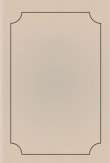قراءة كتاب Report on Surgery to the Santa Clara County Medical Society
تنويه: تعرض هنا نبذة من اول ١٠ صفحات فقط من الكتاب الالكتروني، لقراءة الكتاب كاملا اضغط على الزر “اشتر الآن"
condition. The use of chloroform, and the shock from the evacuation of the pus, added to the gravity of all the symptoms, and for about two weeks the patient was in great danger of death from asthenia. However, by liberal use of whisky, quinia, beef tea, cod liver oil, etc., he slowly rallied. Two smaller abscesses formed below the knee, but those gave no great anxiety, not so much as some bed sores on the back and hips. The sack or pouch became gradually obliterated, down as far as the knee. The cavity of the joint, however, did not seem to be well drained from the opening in the thigh, notwithstanding it had been kept open freely by tents. About three weeks from this last operation, the sinus or pouch within the knee-joint being so imperfectly drained as above indicated, I made an opening directly into the joint at the outer and posterior part, one inch long, through which I could introduce the probe between the ends of the femur and tibia, without any difficulty, through all parts of the joint. However, I discovered no necrosed bone by so doing. Put a tent into this opening, and let the one above heal up, which it did in about two weeks. This latter opening into the joint I kept open by means of tents until the joint became anchilosed and ceased to discharge pus. The patient made a slow and steady recovery, and about the middle of April was able to get out doors again.
The special points of interest in this case seem to be the obscure and insidious mode of attack; the slow progress of the inflammation, it being rather sub-acute than acute; and the fact of its being a sequela of pneumonia.
Prof. Gross, in his excellent work on surgery, says, “synovitis, in the great majority of cases, arises from the effects of rheumatism, gout, eruptive fevers, syphilis, scrofula, and the inordinate use of mercury.”
Prof. Hamilton, in “Principles and Practice of Surgery,” says, “synovitis may be caused by exposure to cold, or may occur as a consequence of a rheumatic, strumous, or syphilitic cachexia, as a gonorrhœal complication, as a sequela of fevers, and from many other causes, whose relation to the disease in question may not always be easily determined.”
Since there was no local injury to the knee in this case which could have caused the disease, we must seek some other cause for it.
I have thought that its origin might be accounted for on the principle of metastasis of morbid material. The patient had pneumonia which passed through its several stages somewhat rapidly, resolution taking place about the end of the second week. The symptoms of this were well marked, viz: a chill followed by fever, cough, brick-dust sputa, delirium, pain over lower half of right lung, which was solidified, and afterward gave the crepitant and sub-crepitant roles. Could not the morbid material, which entered the circulation from the re-absorption of the deposit in the solidified lung, have been carried to the synovial membrane of the knee, and there found a lodgment, and set up the inflammation which resulted in the formation of so much pus? If not, Why not? Notwithstanding a tedious illness, and an anchilosed knee, was not this result better than to have had suppuration of the lung tissue and destruction of the whole of the right lung, and perhaps eventually the left also? However, we are not certain that such a result would have followed, although the patient’s general appearance at the time of the attack, and the typhoid condition which followed, as also the low grade of inflammation bordering on the scrofulous, made such a thing probable.
Case Fourth.—On Jan. 31st, 1879, Mr. R——, Italian, aged 35 yrs., while chopping wood near Almaden mines, was injured by a falling tree. The lower part of the body was very much bruised, both posteriorly and anteriorly. The only place where the skin was broken was a smooth cut about four inches long and nearly half an inch deep, following the



